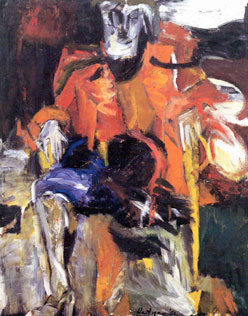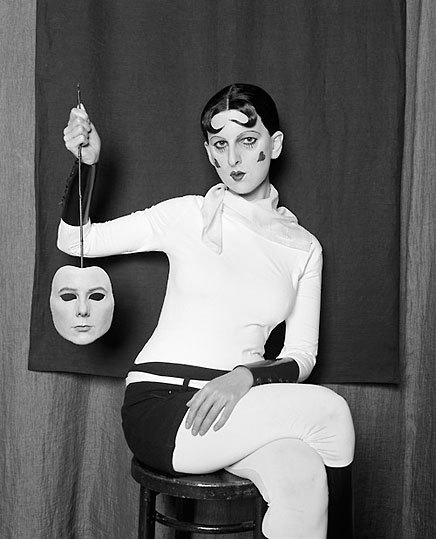 |
| Modernism in today's society |
Modernism can be described as a type of art that started in the beginning of the 1890s and ended in the first half of the 20th century like somewhere around the 1950s and 60s. As the "Guerrilla Girls" define it, modernism is "impressionism, postimpressionism, fauvism, cubism, futurism, constructivism, dada-ism, surrealism, expressionism, abstract expressionism, etc." put all together (GG, 59).
Abstraction could be looked at as impressionism taken to the next level. Abstraction became about vibrant colors but its main focus was on geometry, Geometric shapes, forms, and distortions is what abstraction became all about. Women were very influential in pushing the abstractionism art movement. "The consolidation of Abstract Expressionism as the dominant practice in American modern art pushed to the margins not only women moving toward artistic maturity in other 'modern' styles during the 1940s, but also many women professionally active in what would come to be seen as 'conservative' and 'outmoded' figurative styles" (Chadwick, 319). Grace Hartigan, although her career as an artist practicing abstractionism, was "one of the first abstract women artists of her generation to earn an international reputation..." (Chadwick, 328). Hartigan's most famous work is from 1952 entitled, "Persian Jacket." Hartigan made a decision to give up abstraction because she felt as though her work was an imitation of male artists. Therefore, she left abstraction to find something more original.
 |
| Persian Jacket, Grace Hartigan, 1952 |
Modernism especially German expressionism is an art form that is derived from the huge events that occurred during that time. This link: http://www.moma.org/explore/collection/ge/chronology highlights some of the major events like the Balkan Wars and WWI that occur during the German expressionism movement. Kathe Kollwitz is a famous woman artist that participated in German expressionism. Not many women were taken seriously when discussing politics but German expression was a very political type of art. Kathe painted but then shifted towards "graphic expression: prints, etchings, and lithographs" (GG, 70).
 |
| Kathe Kollwitz, Wood carving on MoMA website |
Hannah Hoch, according to the Guerrilla Girls, is known as "the mama of dada" (GG, 77). Dadaism is "an art movement that challenged every convention (except male supremacy) and scandalized bourgeois society" (GG, 66). Hoch is known as a dadaism artist but her works also included abstraction in her collages, photomontages, and other pieces. She had a relationship with a male artist, Raoul, and when that ended she was in a relationship with a female, Til Brugman. Like Kollwitz, Hoch's art was also very political as she focused on androgyny and lgbtq subjects,
 |
| Hannah Hoch, Made for a Party |
Surrealism is a popular art form and http://www.theartstory.org/movement-surrealism.htm which provides a lot of information on surrealism mentions, "The Surrealist artists sought to channel the unconscious as a means to unlock the power of the imagination." Claude Cahun, like Hoch, expressed androgyny in her works of art. "Claude's sexual identity was so confounding that some books on surrealism list her as a man. Claude took pictures of herself in a range of gender-bending stereotypes..." (GG, 62-63). Her art was mostly in the form of photography. The fact that Cahun identified as a lesbian also made her surrealism political. Many of the male surrealists were homophobic and did not take surrealism to the next level as Cahun did. Her lesbianism was included in her works, "Instead of presenting herself as a passive object ready to be consumed by a heterosexual male gaze, she defiantly presents herself as both object and subject of her own sexual fascinations" (GG, 63).
 |
| Claude Cahun, The Soldier with No Name |
Works Cited
Chadwick, Whitney. 2012. Women, Art, and Society. 4th ed. New York, NY: Thames and Hudson.
Guerrilla Girls. 1998. The Guerrilla Girls' Bedside Companion to the History of Western Art. New York, NY: Penguin Books
No comments:
Post a Comment